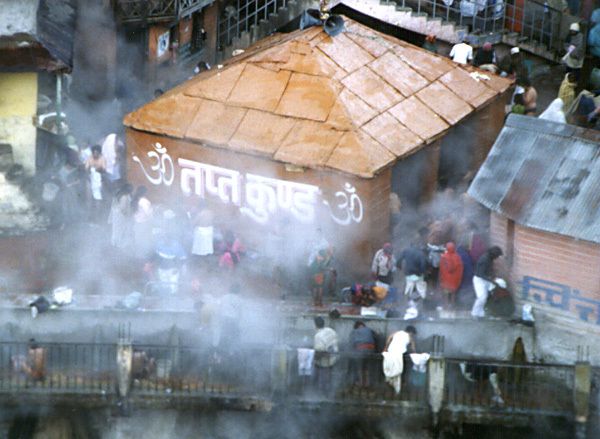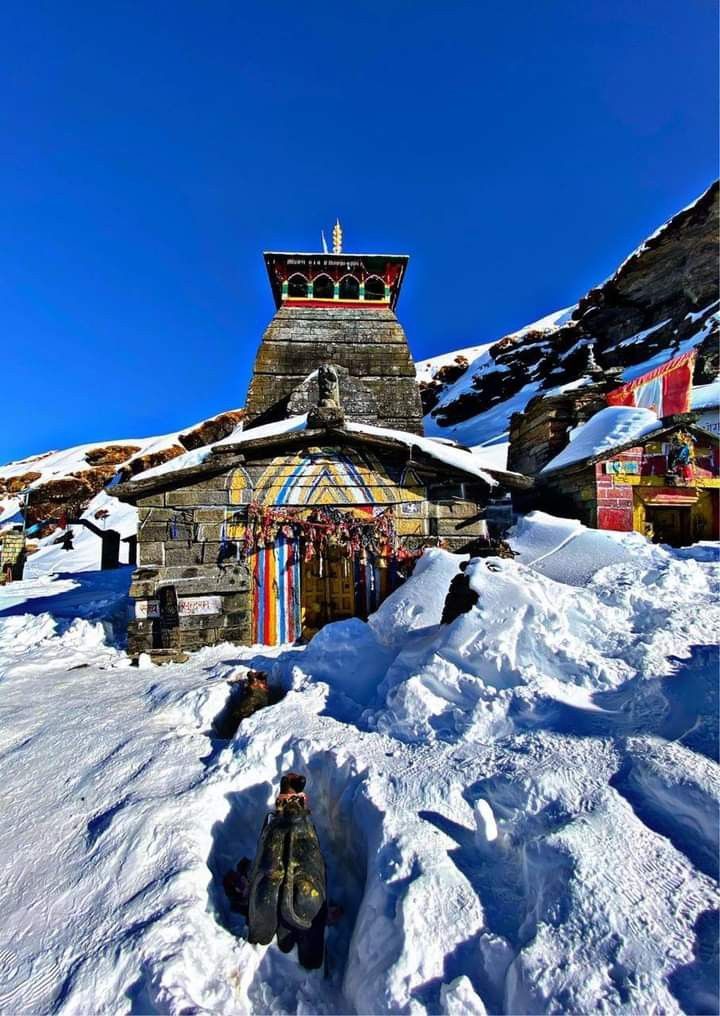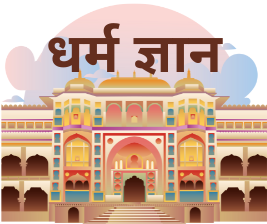Himalayan mountains, the Badrinath Dham stands as one of the most sacred and hallowed places of deification in India. It isn’t just a tabernacle but a spiritual oasis, a doorway to deliverance, where the godly energy of Lord Vishnu resonates with addicts from around the world.
Badrinath Dham is part of the notorious Char Dham Yatra — along with Yamunotri, Gangotri, and Kedarnath which holds deep religious significance for millions of Hindus. But beyond its religious significance, Badrinath is a destination of mystical beauty, steeped in centuries-old myths and legends. For those seeking inner peace, the tabernacle offers a transformative experience. This companion will take you through the history, significance, trip tips, and how Badrinath can truly be the gateway to deliverance.
Badrinath Dham A Sacred Journey
Historical Significance:
“Ancient Hindu holy scriptures mention Badrinath Dham as one of the most important places for spiritual emancipation.”. According to Hindu tradition, Lord Vishnu meditated then for centuries, seeking solitariness and godly peace in the thick timbers of the Himalayas. “Many believe the name Badrinath originates from ‘Badri,’ referring to the abundance of jujube trees in the area, and ‘Nath,’ meaning the Lord. “The name therefore translates to” The Lord of the Berry Trees.
“Many believe Badrinath Dham serves as the gateway to spiritual deliverance, where one can cleanse their soul and experience revitalization.” Since also, Badrinath has come one of the most visited passage spots in India, attracting millions of addicts annually.
Spiritual significance
“Many believe Badrinath Dham serves as the gateway to spiritual deliverance, where one can cleanse their soul and experience revitalization. “The tabernacle, devoted to Lord Vishnu, is one of the 108DivyaDesams , sacred sanctuaries where Lord Vishnu resides.
Addicts from all walks of life come then to offer their prayers, perform rituals, and admit the blessings of Lord Vishnu. The tabernacle’s position at an altitude of 3,133 measures( 10,279bases) makes it an indeed further admiration- inspiring experience, as pilgrims must endure grueling terrain to reach the sacred space. “Numerous people believe that the rigors of the journey purify the mind, body, and soul, testing one’s faith and determination.”
The trip to Badrinath Dham can be as spiritually perfect as the destination itself. That’s how you can plan your trip to this sacred place
“Major municipalities in Uttarakhand are well-connected to Badrinath by road, making it the most common way to reach.”The nearest major city is Rishikesh, located about 297 km down. From there, pilgrims can hire hacks or board motorcars heading to Joshimath, the last major city before Badrinath. From Joshimath, the final 45 km stretch of the trip is a twisty, uphill road that takes you to Badrinath.
By Air
The closest field to Badrinath is gleeful Grant Airport in Dehradun, located roughly 317 km down. From the field, you can hire a hack or board a machine to reach your destination.
By Rail
The nearest road station is in Haridwar, around 318 km down from Badrinath. From Haridwar, trippers can conclude for a hack, machine, or indeed a private auto to complete the trip.
The stylish time to visit Badrinath is between May and October, especially from May to June and September to October. This is when the rainfall is fairly affable, with temperatures ranging from 15 °C to 20 °C during the day and chilly nights. The thunderstorm season( July – August)should be avoided due to heavy rains and the threat of landslides on the hilly roads.
The tabernacle is open from late April to before November, and it’s closed during the down time months due to heavy snowfall and extreme cold waves.
What to Anticipate at Badrinath Temple
The Temple Structure
Badrinath Temple is a beautiful structure erected in the Nepalese architectural style, with its walls adorned with intricate busts of colorful gods and goddesses. The tabernacle is made of determinedness and has a conical-structured roof, with its entrance marked by a large, grand gateway.

The central deity of the tabernacle is Lord Vishnu, who’s worshipped in the form of a black gravestone hero known as the Badri narayan hero.
“Devotees place the idol in the sanctum of the temple and cover it with a sanctum curtain, making the moment of its revelation all the more spiritual.”
The Sacred Tapt Kund
One of the most popular spots near Badrinath Temple is the TaptKund, a hot water spring positioned just below the tabernacle.
“Devotees bathe in the holy waters before entering the temple, believing that this ritual cleanses them of their sins and prepares them for a sacred experience. “The warm sulfur-rich waters are believed to have medicinal parcels and are a natural remedy for colorful affections.

Nearby Attractions
While visiting Badrinath, you should also explore a many near lodestones
Mana Village
Known as the last village before the India- Tibet border, Mana is a must- visit
place for pedestrians and history suckers.

Vasudhara Falls
A beautiful cascade, located 5 km from Badrinath, is believed to be the place
where Lord Vishnu performed penance.

Tungnath Temple
One of the loftiest Shiva tabernacles in the world, located many kilometers
from Badrinath, offers a beautiful journey and an indeed more spiritual atmosphere.

Why Badrinath is the Gateway to Salvation
Badrinath Dham isn’t just a physical trip but a spiritual trip. The position of the tabernacle
many believed that Badrinath at an altitude of 110,279 fet possesses a unique energy that connects
sucker to the godly. The serene and peaceful atmosphere, girdled by snow- limited peaks and
pristine gutters, offers a terrain for reflection and spiritual growth.
Visiting Badrinath with pure heart and devotion brings peace to many.”
eventually achieve moksha( deliverance). The tabernacle is a symbol of stopgap, renewal, and
the eternal connection between mortal beings and the godly.
The passage is an occasion to surrender oneself to an advanced power, letting go of worldly
distractions and embracing the stillness of the Himalayas. Many believe that walking through Badrinath brings benefits these sacred spaces, the soul sheds its accumulated burdens and moves near to deliverance.
Travel Tips for Badrinath Dham
Acclimatize to the Altitude
The high altitude of Badrinath can beget altitude sickness, so it’s
pivotal to adapt duly. Drink plenty of water and take it decelerate while touring.
Dress Appropriately
The rainfall in Badrinath can be changeable. Carry warm clothes indeed
in the summer months and prepare for unforeseen rain or snowfall.
Pre-book Accommodation
During the peak season( May to June), accommodation near the
tabernacle fills up snappily. It’s stylish to bespeak hospices in advance through trusted trip
agents or government doors.
Carry Essential Medicines
Include drugs for cold, fever, and headache, as well as any
particular specifics you may need.
Respect Original Traditions
The people in this region follow strict religious practices. Be
regardful and aware of the original customs and rituals.
Conclusion
Badrinath Dham isn’t just a tabernacle, it’s an assignment to embark on a sacred trip towards
tone- discovery and spiritual enlightenment. girdled by the majestic Himalayas and steeped in
mythological significance, it’s a place where the material world fades down, and only the godly
remains.
Whether you’re a spiritual candidate or an adventure sucker, Badrinath offers a deeply
transformative experience. The sacred waters of the Tapt Kund, the important air of Lord
Vishnu’s hero, and the serene Himalayan geography combine to produce an atmosphere that
fosters peace, soul-searching, and deliverance.
A trip to Badrinath isn’t simply a visit to a tabernacle; it’s a profound connection with the godly
that will remain with you ever. The trip through the Himalayas to this sacred point may be
grueling , but the price — spiritual peace and moksha — makes it one of the most beautiful
pilgrimages on Earth.
Wikipedia :- https://hi.wikipedia.org/wiki



Comments are closed.